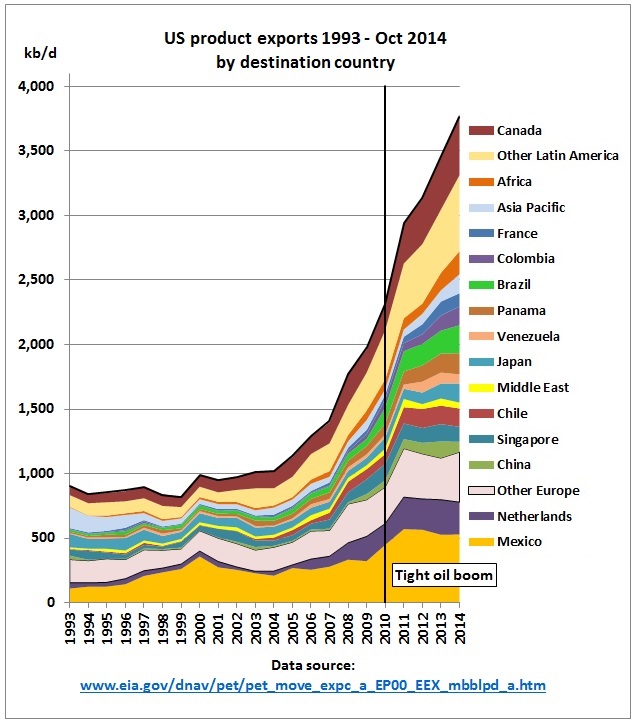In the first week of July, U.S. net imports of petroleum products fell to just 1.670 million barrels per day (mb/d), the lowest weekly total on record in at least three decades.
The decline of net imports comes as the U.S. has ramped up oil production in the last few years, which affects the net import figure in two ways. Surging oil output cuts out the need for imports. Also, a steady increase in exports also pushes down the net import figure.
Crude oil exports hit a high of 3 mb/d in the third week of June.
However, the net import figure has been falling for years, and a large part of that is the fact that the U.S. has been scaling up exports of refined products, including gasoline, distillate fuel oil and propane, among others. This trend dates back longer than the recent run up in crude exports.
In 2005, weekly net imports peaked, routinely topping 13 mb/d. Now that figure has plunged to less than 2 mb/d.
With a zero net import bill in sight, is the U.S. on the verge of energy “independence,” the long sought-after goal that has been promised by just about every president dating back to Richard Nixon?
Not exactly. While the U.S. may not need oil and refined product imports in the same way that it used to, the U.S. is still completely enmeshed and intertwined with the global market. In fact, as output of oil and refined products dramatically increased over the past few years, the volume of trade also rose sharply. “Far from reducing interaction with the world, higher [light tight oil] output has contributed to increased traffic as U.S. refiners seek to diversify their crude slate and producers look for new markets,” the IEA wrote in its latest Oil Market Report.
…click on the above link to read the rest of the article…












